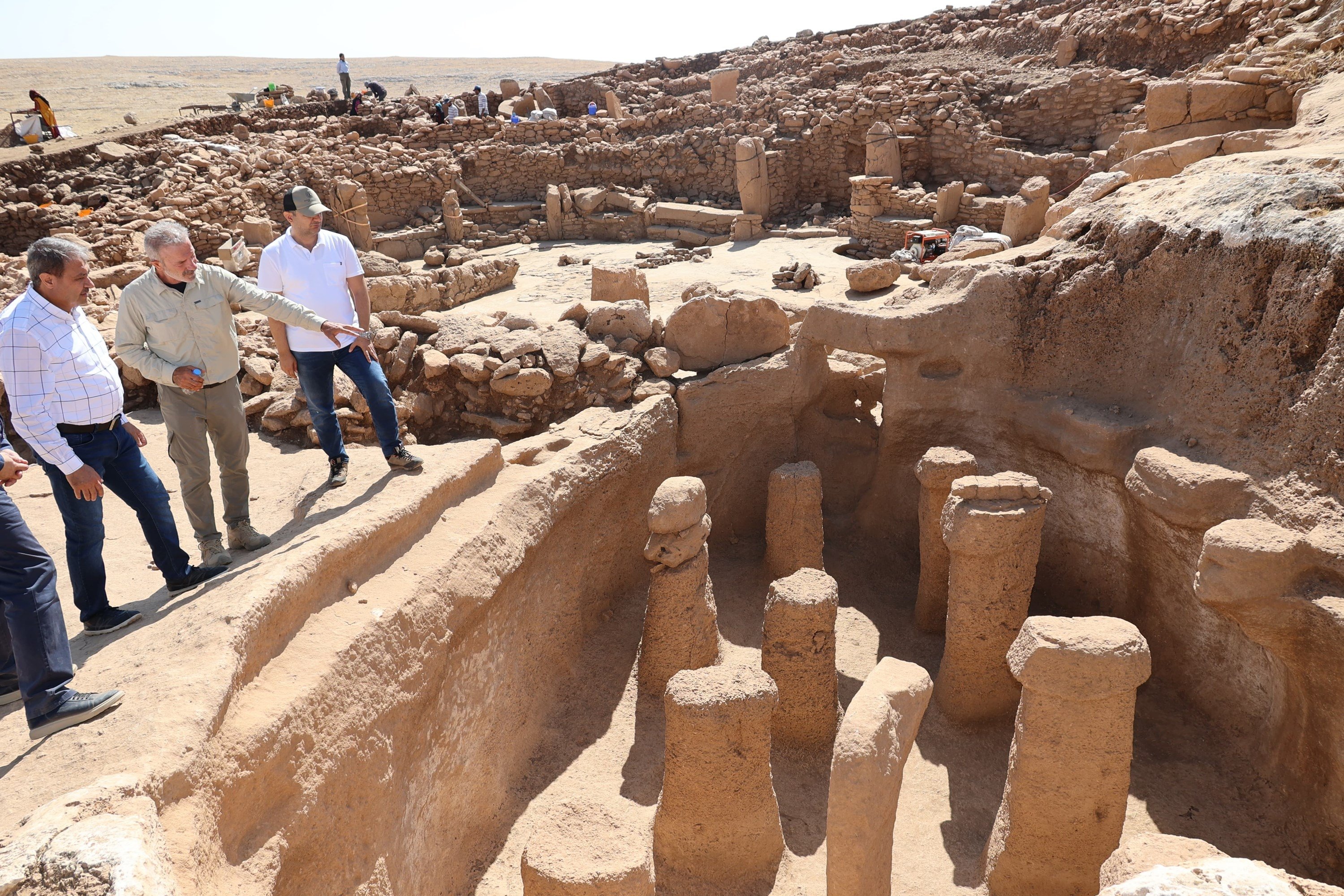
Archaeologists at Karahantepe have discovered a rare Neolithic carving of a running wild donkey, shedding light on ancient animal iconography and daily life practices
Archaeologists have uncovered a carved figure of a running wild donkey on a stone slab at Karahantepe, an important Neolithic site in Şanlıurfa, Türkiye.
Karahantepe, known for its over 250 T-shaped megaliths from the Neolithic period, is currently undergoing its 2024 excavation season. During recent excavations, a carving depicting a wild donkey in motion was discovered on one of the stone slabs laid on the ground.
Professor Necmi Karul, the head of the Karahantepe excavation team, told Anadolu Agency (AA) that excavation work is ongoing at 10 sites, including Karahantepe, as part of the Stone Hills Project.
"This year, we have focused our efforts around the central public structure and surrounding communal buildings and huts in Karahantepe, and began uncovering one of these structures a few weeks ago," Karul explained. "The building is semi-subterranean, with a thatched roof supported by a low stone wall. We understand that the floor was paved with large flat stones. Among these stone pavements, some were used as grinding stones, and on one of them, we found a motif of a wild donkey."
Karul emphasized the significance of animal depictions in Neolithic iconography, stating: "There are key animals that are characteristic of this period's iconography. We categorize them into two groups: the first includes animals that are depicted with a focus on their ferocity, which we often see on the standing stones. The second group consists of birds and animals that were commonly consumed, such as gazelles, which were particularly prominent. Wild donkeys also fall into this latter category. These animals, unlike the more fearsome ones, were part of the daily life of the people, who lived alongside and consumed them. The wild donkey figure, carved in a dynamic motion on a grinding stone, is the first of its kind we have found at Karahantepe. Although we have previously encountered various figures on the floors of structures at Göbeklitepe, this is the first time we've seen a dynamic motif of a wild donkey. This discovery will help us better understand the animal iconography of the period and the relationship between humans and their environment."

Karul noted that the structures currently being excavated date back approximately 11,000 years and that the presence of grinding stones suggests these spaces were also used for daily activities. He also highlighted the symbolic importance of finding animal depictions or standing stones within these spaces.
"The discovered donkey figure, about 20 centimeters long, is placed right next to a grinding stone. More than its size, what stands out is its dynamic form and the proportional depiction on the stone it is carved into, showcasing the artistic skills of the period," said Karul. "This is the first example of such a figure found on a floor at Karahantepe, suggesting that there could be more like it. We have not yet reached the floor levels of many huts mentioned here. We are deepening our exploration in different structures and anticipate reaching similar levels in other spaces as well."
Stone Hills Project
The region of these settlements is named "Taş Tepeler,” literally meaning Stone Hills. Covering an area of 200 kilometers from one end to the other, Taş Tepeler is an Anatolian and Upper Mesopotamian territory that hosted the earliest settled communities.
Taş Tepeler features 12 main sites including Göbeklitepe. Seven of these big and small sites are now excavation sites that will shed light on a crucial yet little-known period of history. Excavations are carried out by scientific delegations and the Şanlıurfa Museum Directorate under the leadership of the Ministry of Culture and Tourism's General Directorate of Cultural Heritage and Museums. Ankara will also provide more financial support and staff to these seven sites and launch excavations in the rest soon. The Ministry of Culture of Tourism has also invited foreign experts from many countries to join the works on the sites.
Among the sites of Taş Tepeler are Karahantepe, Harbetsuvan, Gürcütepe, Kurttepesi, Taşlıtepe, Sefertepe, Ayanlar, Yoğunburç, Sayburç, Çakmaktepe and Yenimahalle. "Taş Tepeler is believed to be the first example of sedentism and social union on earth, making the region the land of grand transformation. Some 12,000 years ago, shelters became houses and real villages appeared here. In Taş Tepeler, human beings experimented with examples of organized labor and specialization for the first time," Karul explained.
